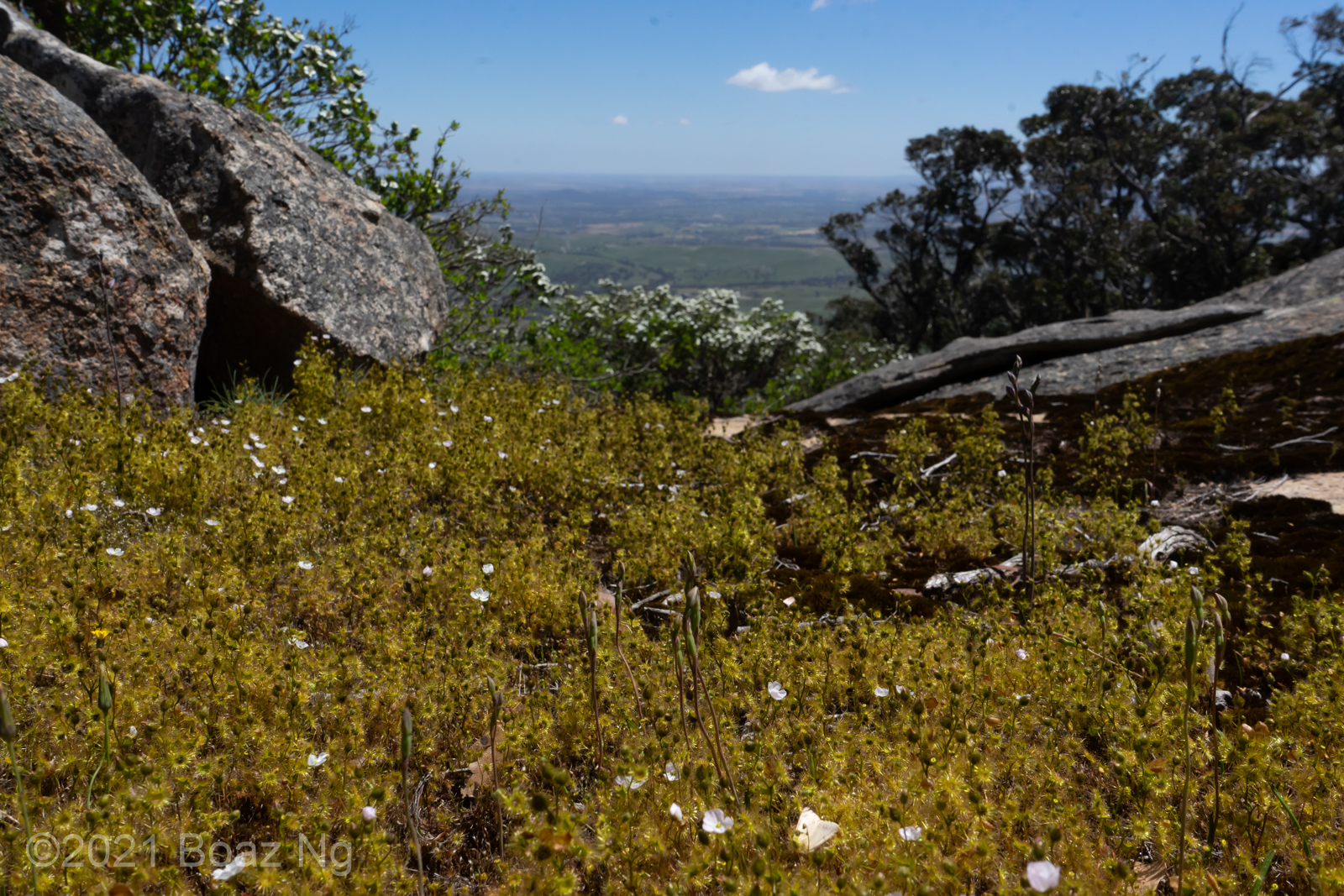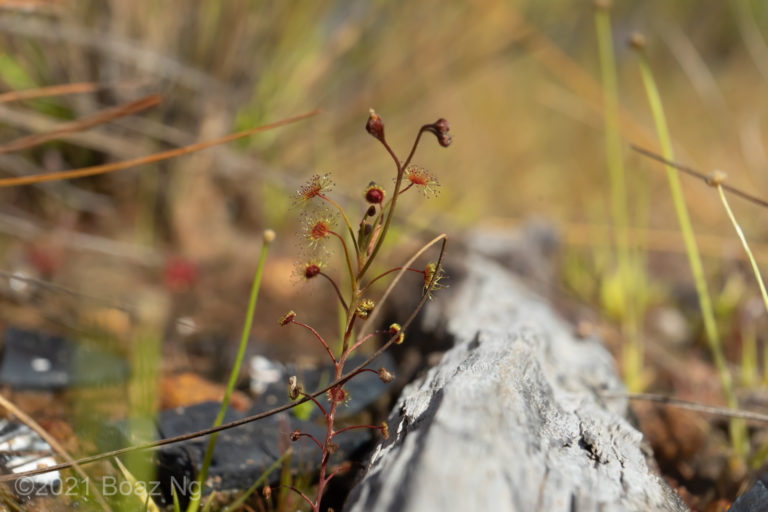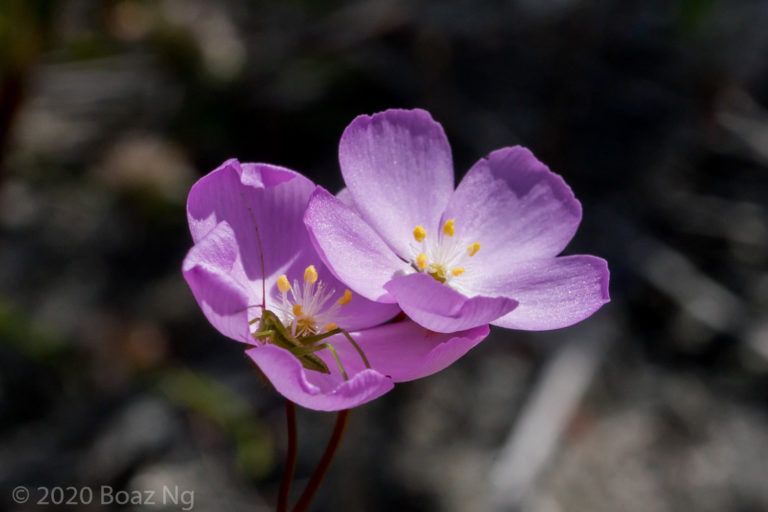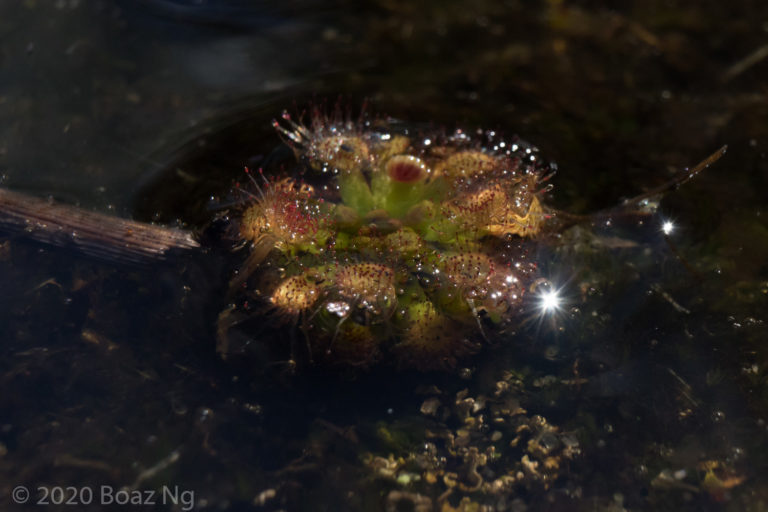In the last months of 2020, I ventured into the Victorian countryside to document the carnivorous plants that grow there. I found several newly described taxa and learned so much about the remarkable niches of these plants.
Part 2: The Grampians
Mt Langi Ghiran derives its name from the language of Djab wurrung people, the traditional custodians of the region, and means ‘home of the black cockatoo’ (Lar-nyi-djiran). At the center of the state park are a set of prominent granite peaks, with pristine woodland around the foothills that protect sacred sites and important natural heritage.
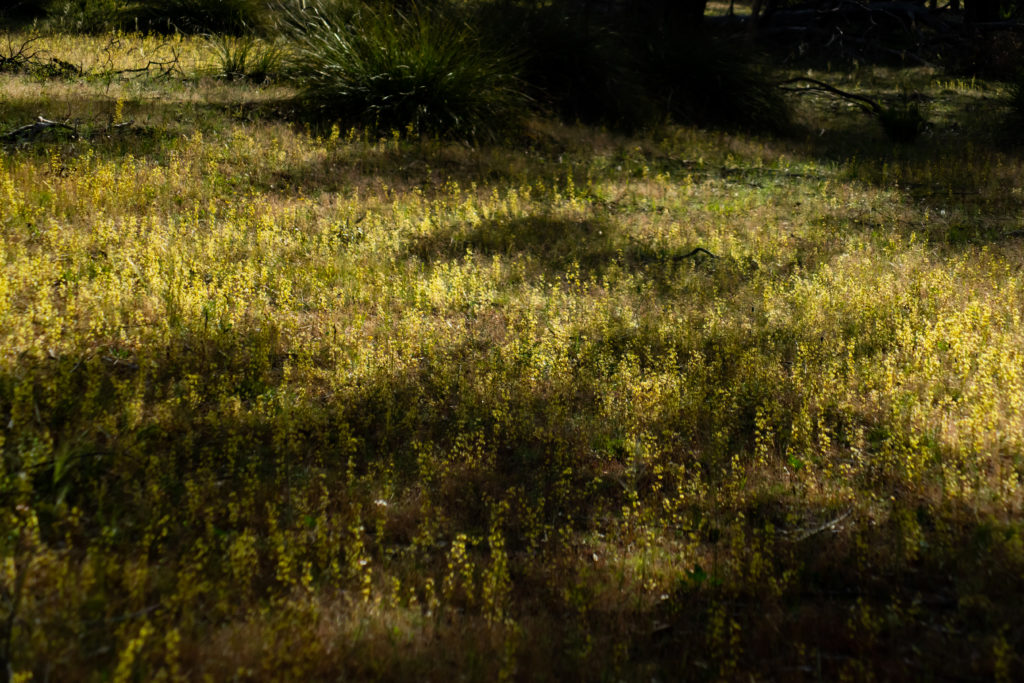
As I drove into the boundaries of the park, I was struck by how lush everything was. The flat grassy plains were illuminated by the glorious dappled light of the low afternoon sun that shone through the sparse woodland canopy. Slowing the car, I found that the lustre of the ground was actually caused by thousands of Drosera gunniana, who’s dew refracted the light with a prismatic glow. I parked at the campsite and quickly set off to explore the plains of the area. In every direction, D. gunniana stretched as far as the eye could see. The olive, dewey foliage of the plants amplified the golden tones of the low sun. I was particularly taken aback by the contrast caused by the patchy shadows of the trees, which made the plants particularly bright. I cooked a peaceful dinner as the sun set and had a good nights rest.
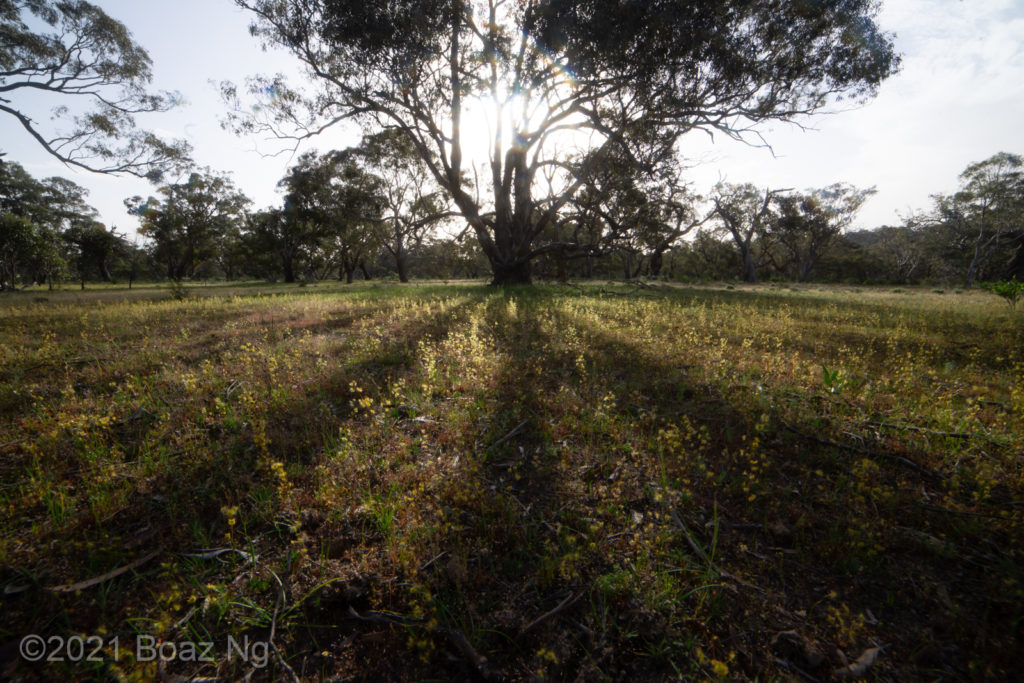
The following morning, I waited for my hiking buddy Peter to drive up from Melbourne and join me for a trek up to the summit of Langi Ghiran. On the agenda was to locate an isolated population of Utricularia grampiana that reportedly grows in the range but I didn’t have any clues for its exact location. It wasn’t long before Peter’s little yellow Getz rolled up at speed, trailed by a cloud of dust, and we set off into the beautiful morning.
The first sections consisted of a fire trail that passed through some tall and gently sloped woodland as we approached the base of the mountain. In the open understory, we saw some impressive specimens of Drosera auriculata which were so heavily branched that they resembled D. gigantea! I also found plenty of D. gunniana and the occasional remnants of D. glandigera on more exposed sections of the trail.
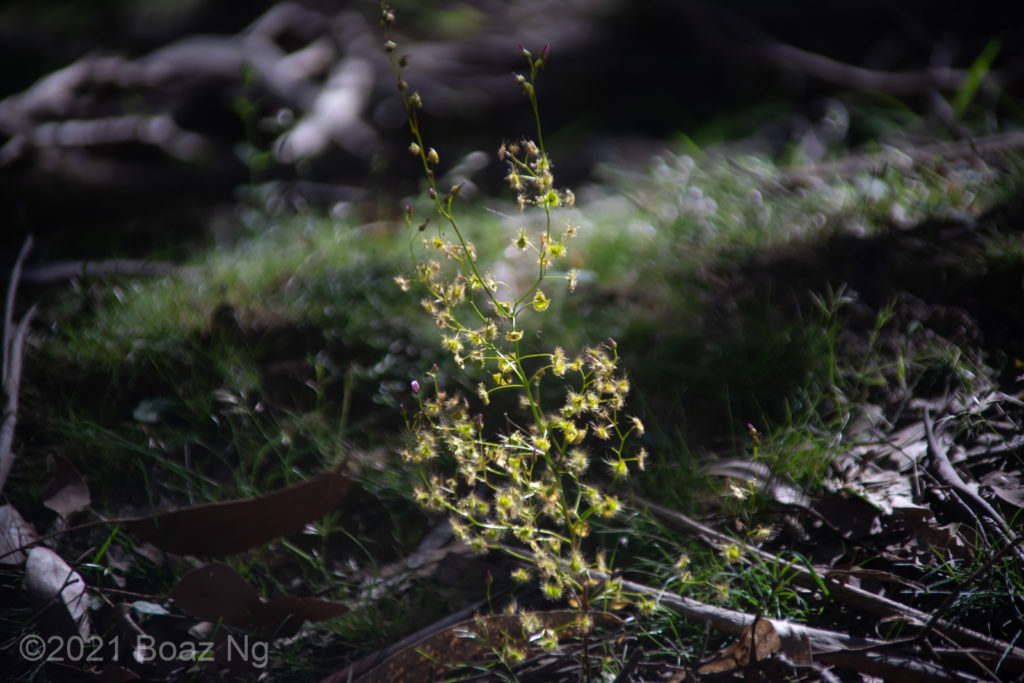
Soon we spotted the gigantic rock platforms that rise straight up to the high peaks of the range. Pushing through some bushes to get to them, I was hoping that the moss that coated these rocks would be the perfect habitat for D. gunniana. Unfortunately, it seemed that it was too late in the season and the niche was already dessicated, although I didn’t spot any remnants of spent flower scapes that usually remain. Not to be discouraged, we continued along the trail hoping for wetting moss higher up on the peaks.
Eventually the fire trail ended and we followed a small track into the bushland as the ascent of the mountain began. After some strolling in some undulating forest, we were suddenly faced with the exposed rock that stretched all the way to the peak. It was very fun scrambling on the rock, picking paths to avoid the long drops that would ensue should you accidentally slip. Eventually the gradient flattened out as we reached the top of the mountain.
In shallow depressions and cracks in the rock were moss beds that I thought looked similar to those in the seepages of the Grampians. The difference was that they were not fed by higher seepages and relied on winter rain to hydrate them. Whilst Utricularia grampiana was absent, I did see some nice stems of D. auriculata. I wasn’t particularly surprised given that the species is very common and I’ve seen it in similar niches many times over the years.
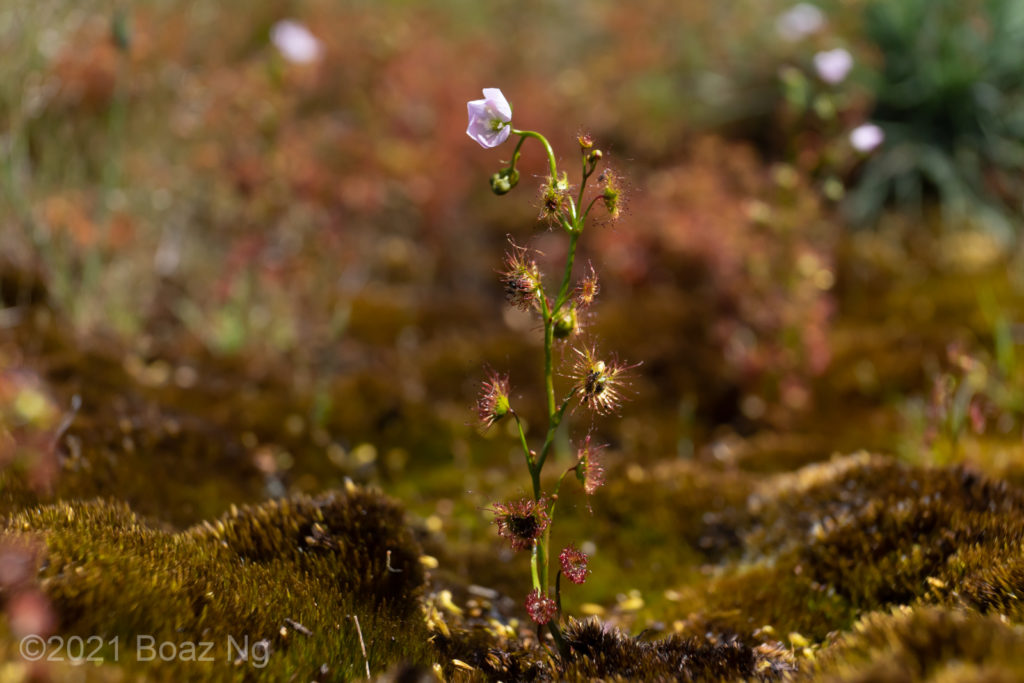
As we explored the summit area, I was surprised by how vegetated it was, with heathy shrubs and tall trees growing in sheltered pockets of the peak. Soon we found the actual summit and stopped for lunch and to admire the view. As soon as I put my bag down I noticed that there was hundred of Drosera gunniana right around the corner and quickly got up to photograph them. I wasn’t expecting to see a population high on a mountain, given that it typically grows in flat plains. The plants grew in a moss bed at the base of a shrubby clustering and although the moss was pretty much dry at the time, I could imagine it being much wetter in the middle of winter. The observation of this habitat confirmed my suspicion that D. gunniana is well adapted to grow in seepages, in addition to the plains where it is most commonly encountered.
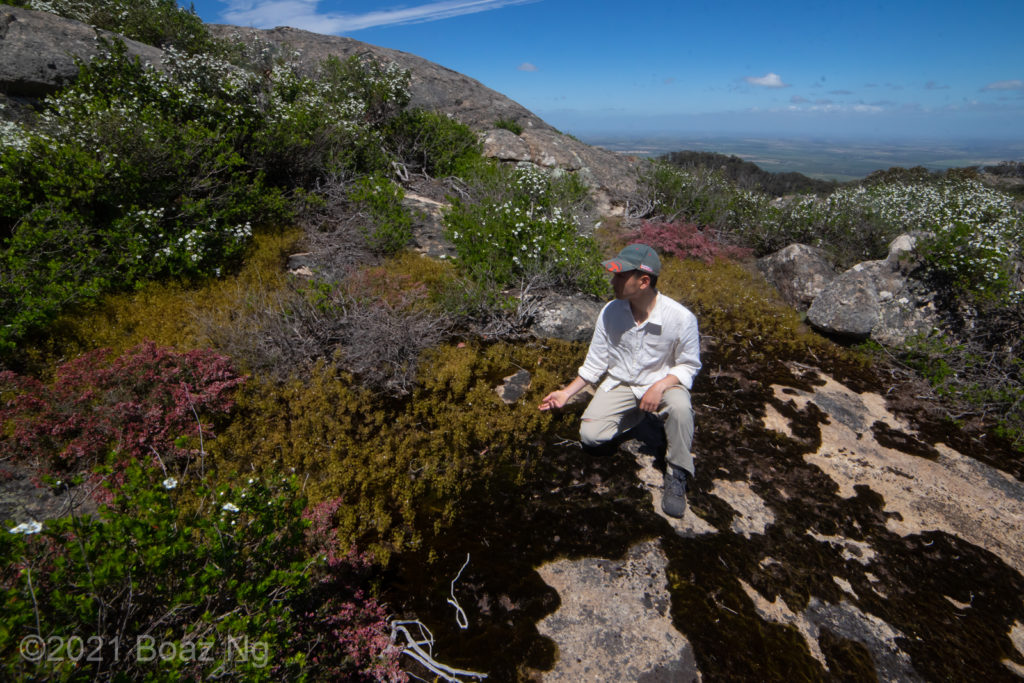
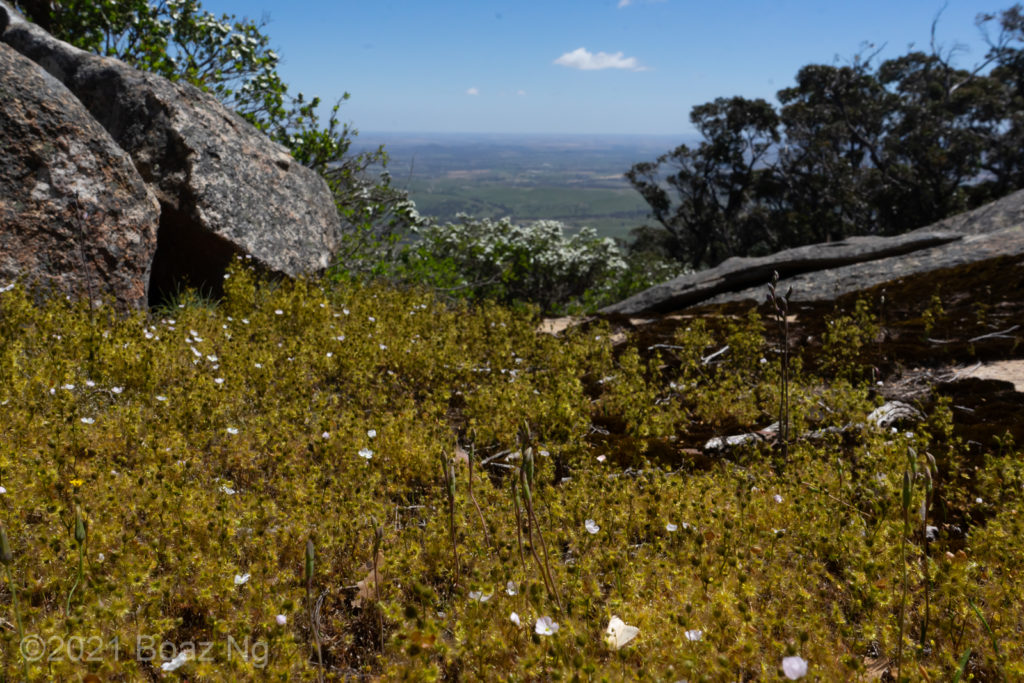
After enjoying the plants, we made our way back down the peak to continue our search for U. grampiana. Looking at the Google maps satellite view (seriously don’t know how people managed before smartphones) we had identified some easily accessible rocky outcrops where they might be. These outcrops were located amongst bushland at the foothills of the range, so we thought that they might be wetter than the exposed rock faces we just surveyed.
At first, it seemed unlikely that any bladderworts would still be present as the moss already dried out. I did notice that the bases of the granite slabs seemed greener, and from my experience in WA, I knew that these outcrops had the ability to channel and concentrate water at their base. When I got closer, I found that there were thousands of tiny purple Utricularia growing in the rapidly dessicating moss!
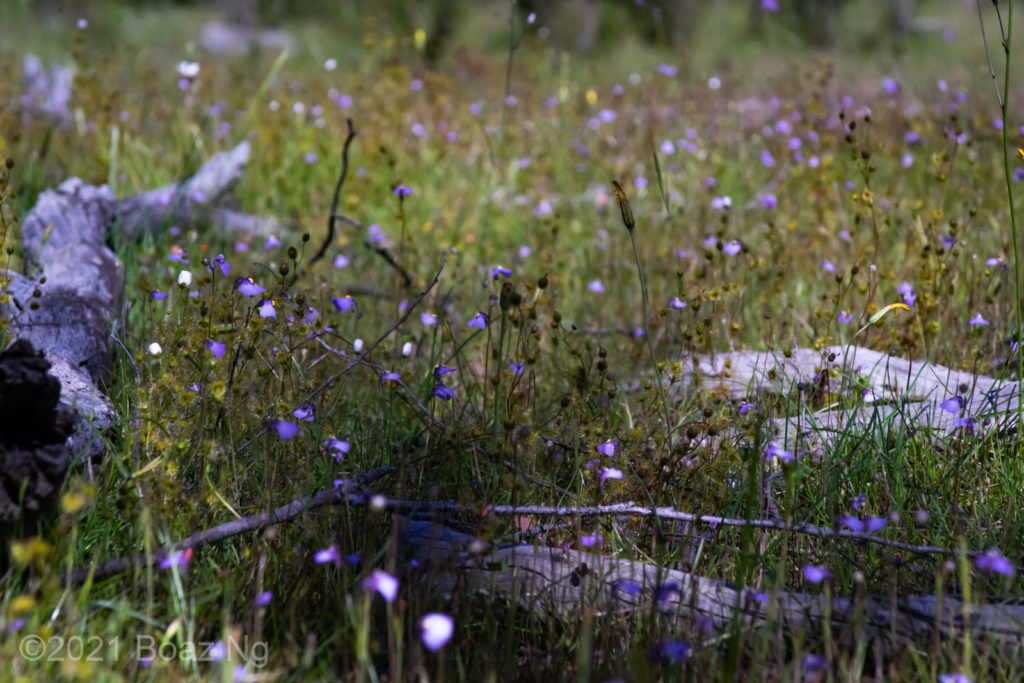
I was initially unsure whether these represented U. grampiana or the far more common U. barkeri. U. grampiana differs in the way its bracts are fixed to the stem, and how far the palate protrudes over the lower petal, but drought-stunted U. barkeri can often look the same. The plants here were growing in a similar niche to the U. grampiana I saw a few days prior, occupying skeletal moss beds atop a rocky seepage but eventually I concluded that they were U. barkeri based on the morphology of some healthier specimens. Still, the en mass flowering event was quite the sight to behold!
After a long day hiking, we drove to Ballarat to have a delicious pub meal before returning back to Melbourne to work for a few weeks. But the adventure was far from over, and summer was just around the corner…
Part 4. East Gippsland

